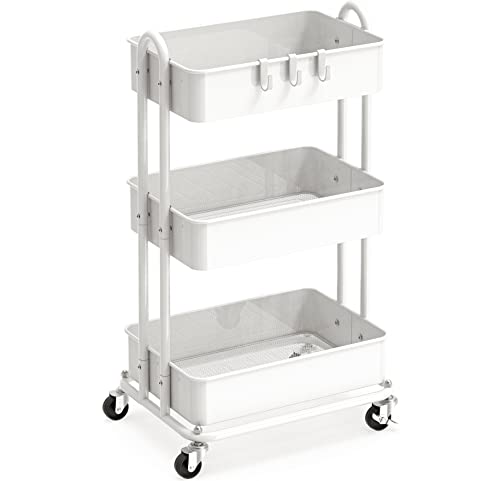7 ways to keep a shared bedroom organized and wipe out tension
Maximizing space and storage is key, the experts stress

Trying to fit two lots of ‘stuff’ in one bedroom and expecting it to remain comfortable and clutter-free feels like a stretch – literally – and that’s before you’ve taken into account different needs, tastes, ages and personalities, too.
Rest assured though, it can be done. Whether to accommodate siblings, parent and child, dorm-mates or visiting guests, we’ve quizzed our organizational experts on how to keep mess – and arguments – to a minimum in shared bedrooms.
Being savvy with space and storage is important, but even more so when it’s shared bedrooms as there’s nothing like cramped quarters to cause tension, our experts say. Follow their strategies to ensure a space that works for everyone.
Pro-approved ways to keep a shared bedroom organized
It’s one thing knowing how to organize a shared bedroom, but keeping it that way will require everyone’s cooperation. Encourage the occupants to declutter their bedroom belongings beforehand, and make sure everyone has a say in how the room is divided to avoid arguments from the start, advises professional organizer and decluttering expert Brenda Scott, founder of Tidy My Space.
‘Set up a schedule of bedroom duties so everyone knows what's expected of them and when. Younger children might need a little help, so walk them through the process – they’re much more likely to keep on top of tidiness if it feels easy and achievable’.
1. Divide the room with storage
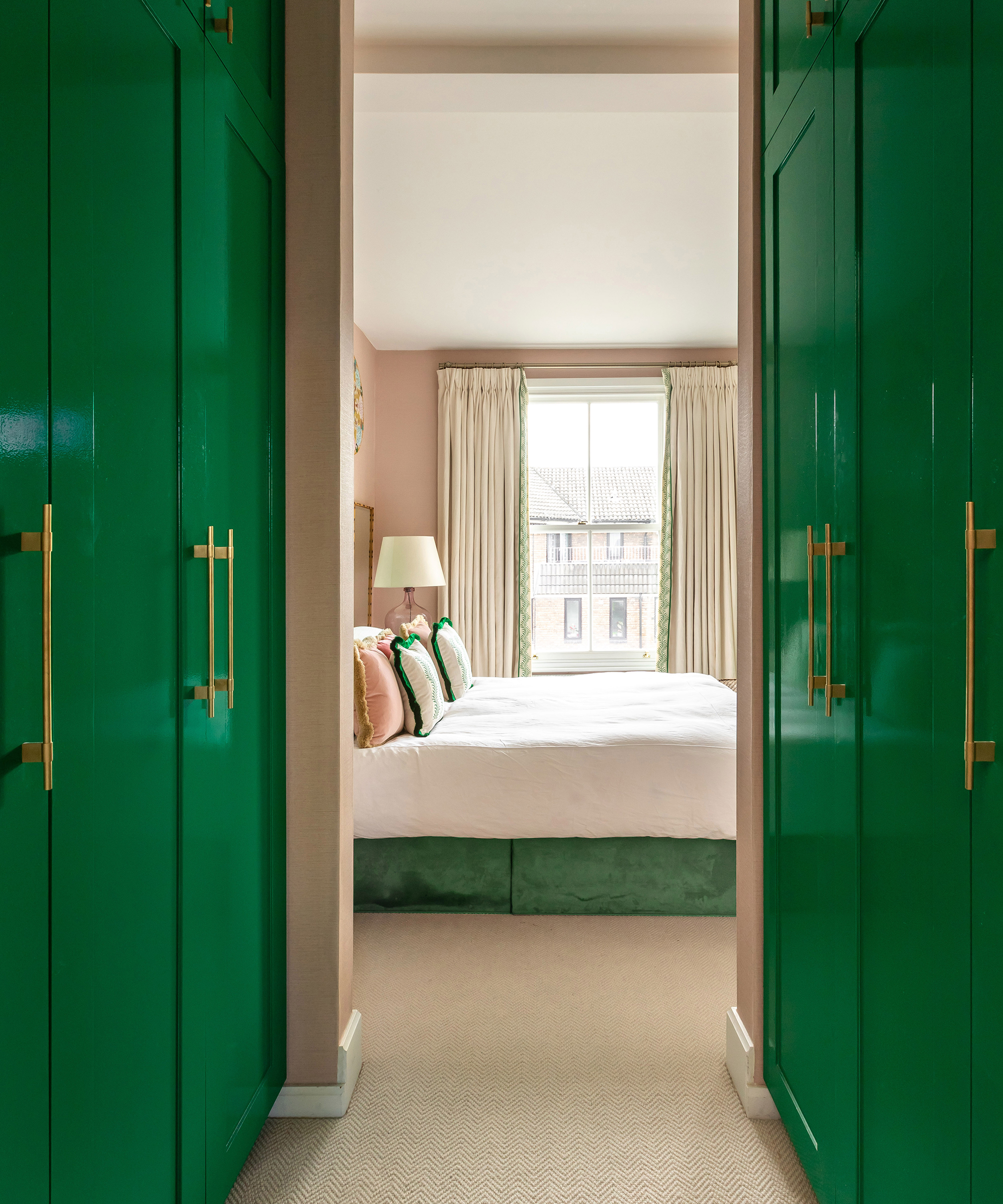
Older children and adults tend to want more privacy, so consider partitioning their room with a divider, of sorts. Screens and curtains are fine, but if you’ve got the space, don’t waste an opportunity to incorporate extra storage, advises professional organizer Julie Peak, owner of The Precise Place.
‘Units with cubbies offer storage on both sides while also creating designated zones, whether that be between room occupants or areas of the room, such as ‘studying’ or ‘sleeping’. Adding labeled bins or baskets helps to keep each person's belongings organized and easy to find,' she says.
While closed storage is great for stashing items out of sight, open shelving units might be a better option in small bedroom ideas as they allow light to flow through, creating an open, spacious feel. ‘They can also double up as decor, adding personality while creating a clear boundary between spaces’, adds Julie.
Ikea always comes up trumps with bedroom storage ideas, and the Kallax shelving unit range, at IKEA is our go-to – there’s a size (and color) to suit every space. Use different colored boxes to designate storage in children’s rooms, or opt for natural finishes to bring sophistication to guest bedroom ideas.
2. Zone the room to make tidying easier
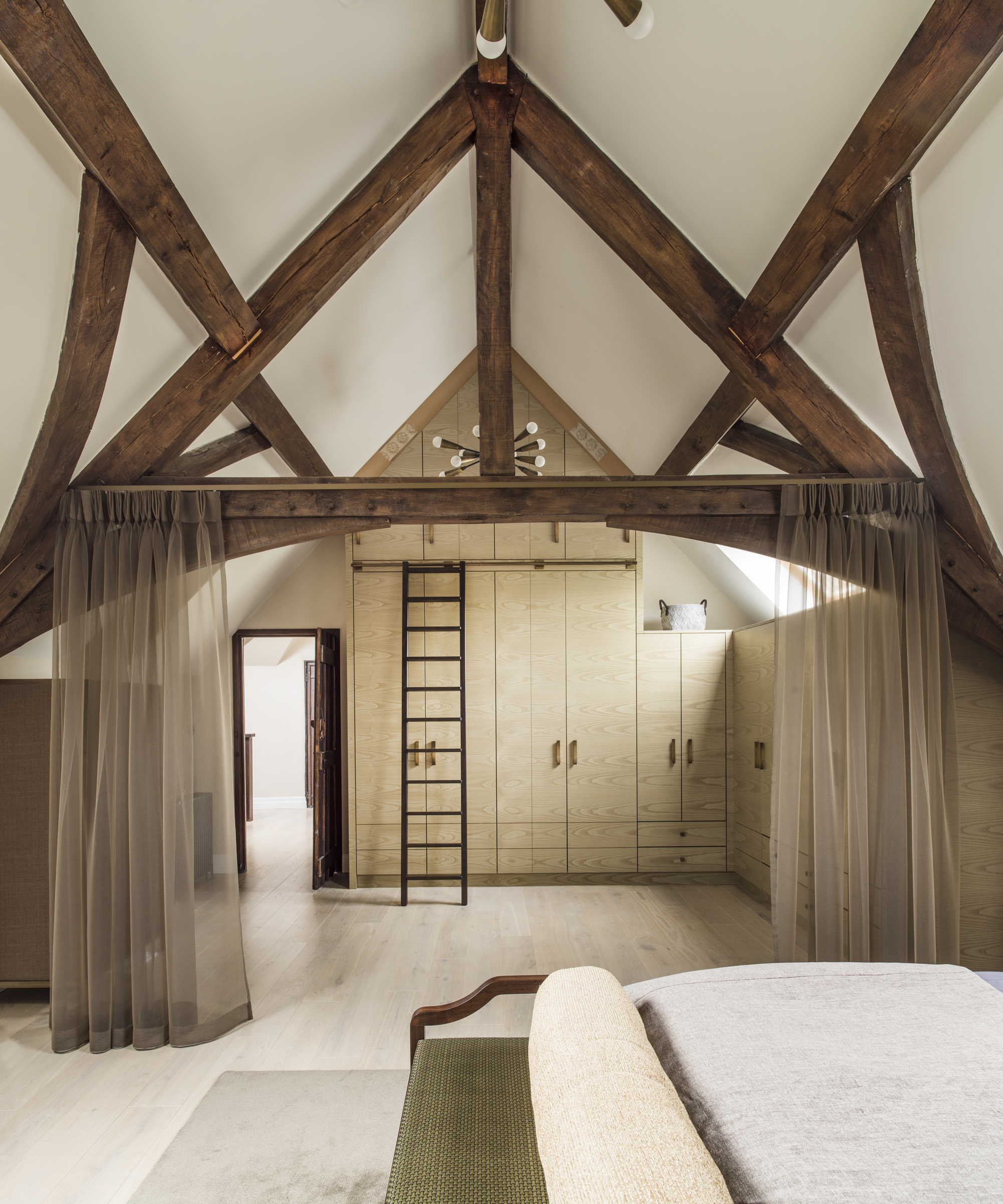
When planning a shared bedroom layout, think about how the occupants will be using the room and arrange items accordingly. This is particularly important if the room is being used for various tasks; defining study and sleeping is an efficient way of splitting a shared dorm room, for example.
‘It can also be useful to have a general ‘drop zone’ when organizing a dorm room’, says Julie. ‘A central place for everyone to leave backpacks, shoes, or jackets when entering. Invest in hooks, shelves and stylish wall hung storage, like these Highland Dunes Wike Seagrass Wall Baskets, from Wayfair, to keep items up and off the floor. This keeps the rest of the room free from clutter and makes it easy to find things when it’s time to head out’.
In kid’s room ideas, designating zones for sleeping, playing and studying, as well as specific areas for organizing children’s clothes and shoes, books and toy storage ideas, makes it easier to keep things neat and tidy, and helps create a sense of flow within the room.
If you’re short on storage space, Julie recommends using a rolling cart. ‘From art supplies and study materials to toiletries in a dorm room, they’re a great option for holding items in shared rooms where flexibility is key – simply roll them out of the way when not needed’.
3. Label storage clearly

Labeling storage not only eliminates confusion of what belongs to who, but also what belongs where, meaning items are less likely to get lost if they’ve been borrowed, or the room is being tidied by just one of its occupants.
‘When organizing toys for older children, label bins, drawers, and closet spaces with their name. For those not of reading age, use color-coded labels. The Brother P-touch Label Maker, available at Amazon, makes creating custom labels easy; you can even add fun fonts or icons for a personal touch’, recommends professional organizer Michelle Urban, founder of The Organized House.
4. Maximize floor space by using bunk beds

If it’s a space-efficient shared kids bedroom you’re after, bunk or loft beds are an obvious choice. Along with the excitement of sleeping up high, they free up floor space for creative play – far more important than sleeping (to your little ones, that is!).
They also offer opportunities for hidden kid’s bedroom storage ideas. Some shop-bought designs, such as this Viv + Rae™ Decimus Twin Solid Wood Loft Bed from Wayfair, has storage built into the bed frame itself, but customizing existing designs is easy enough to do, according to Michelle.
‘Consider positioning a vertical storage unit at one end with cubby storage that can be accessed from both bunks, or add hooks and baskets onto the sides to stash away everyday items’, she says. Alternatively, consider commissioning bespoke joinery to ensure you’re getting the most out of the space you have.
For those who aren’t keen on bunks or when organizing a shared bedroom for adults, consider positioning two single beds at right angles or along opposing walls to maximize space and define boundaries.
‘A genius idea is to use a white noise machine [the Sharper Image Sound Soother Revo, available at Target comes pre-programmed with a variety of soothing nature sounds and music, if that’s more your bag] or ambient sound app to create a personal sound bubble – this can be a game-changer for those with different sleep schedules or noise preferences’, adds professional organizer Melanie Summers, founder of I Speak Organized.
5. Accentuate personal space

Whilst it’s best to avoid themes in children’s shared bedrooms, that’s not to say it should be void of personality. Give each child creative control over their own space; things like bedding, posters and wall stickers add a personal touch, while using a neutral scheme throughout the rest of the room's clearly defined shared space.
‘Give each child a special box where they can store their most prized possessions – whether that's favorite toys, artwork, or personal mementos. These boxes help them feel like they have some privacy and ownership, reducing conflicts over shared space’, says Michelle.
6. Split the closet with helpful organizers
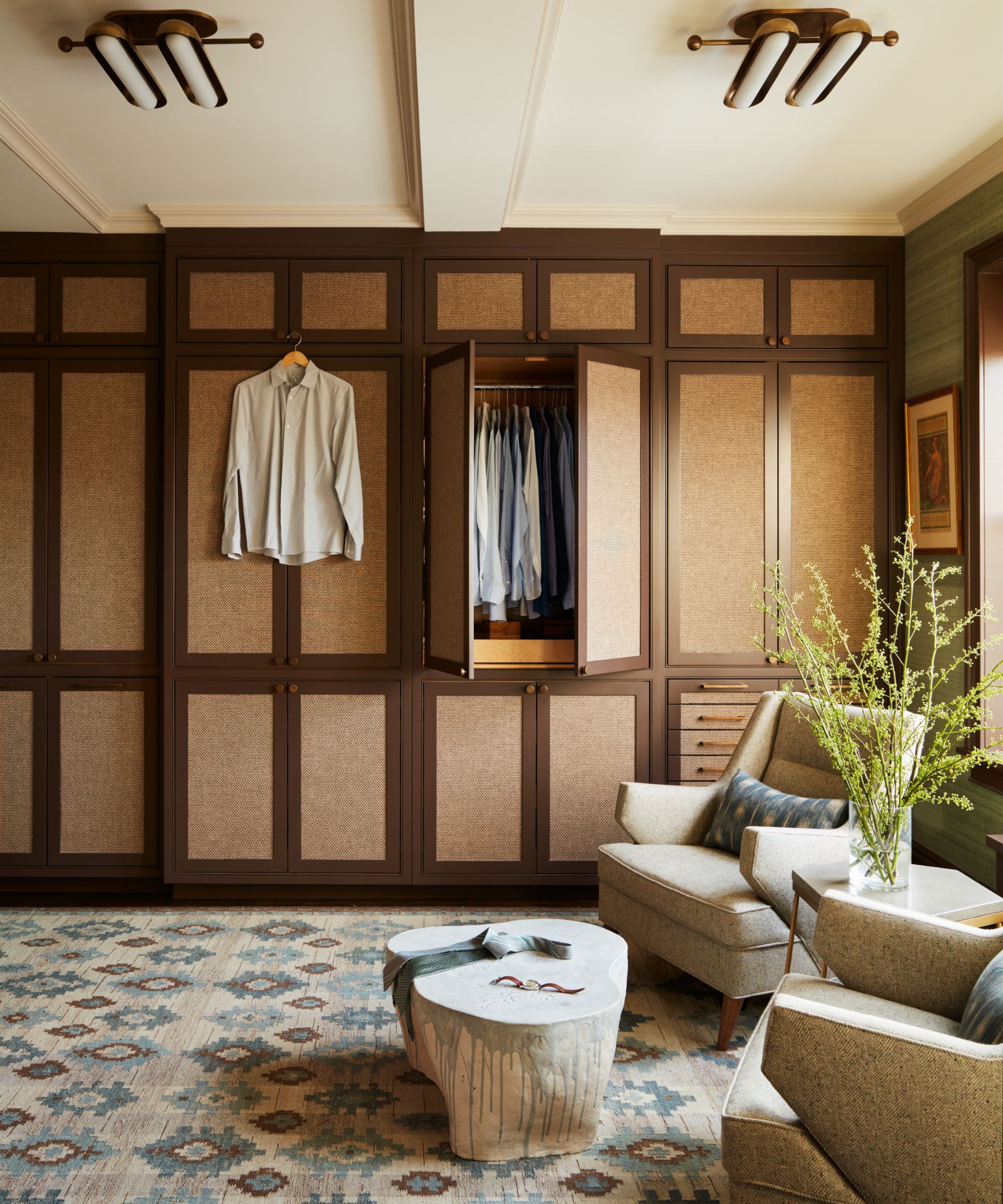
Organizing a closet so it works for two people can be a tricky business. A split down the middle might seem like the fairest way, but it’s not necessarily the most practical.
‘Take the time to assess each individual’s storage needs and divvy up closet space accordingly’, says professional home organizer Meaghan Kessman, founder of Meaghan Kessman Home. ‘One person might need more hanging space while the other prefers to organize clothes into drawers or on shelves – it’s important not to get stuck on the idea of a ‘side’ each. Use labels or ERA Accents closet dividers, from Amazon, to make it clear what belongs to who.
‘If you’re struggling for space, closet organizers can make a big difference’, she adds. ‘Swapping to slimline or cascade hangers, using shelf and drawer dividers and installing pull-out racks or an extra hanging rail, for example. Utilize vertical space with over-the-door organizers stackable baskets or shoe storage ideas positioned in the bottom of your closet’.
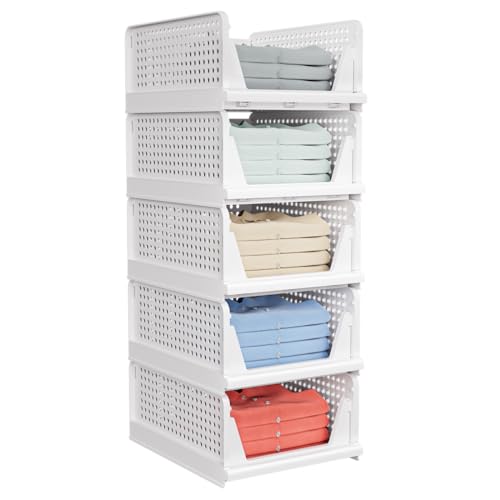
These pull-out containers are ideal for filling the dead space at the bottom of your closet. Use them for clothes, toys, books and more; they fold down flat when not in use, so are a handy solution for temporary guest storage, too.
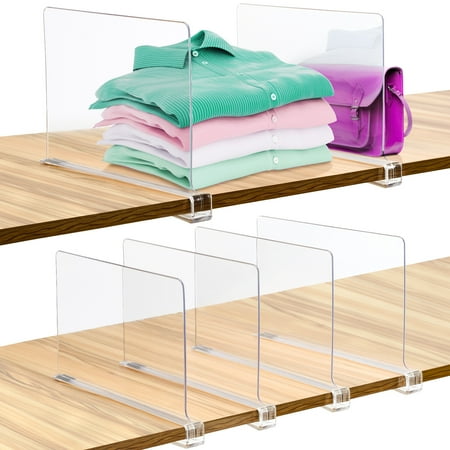
Divide shelf space fairly in a shared closet with these acrylic dividers (suitable for shelves up to 0.75" thick). Whether you're stacking jumpers or jeans, seperating bags or toys, high-sides keep everything in place; simply slide them along to fit what you need.

Maximize space in a small closet by integrating this adjustable hanging rod. The bar expands width-wise from 18" to 30", and can be adjusted height-wise in 1-inch increments, depending on how much space to work with – and how many clothes you have to fit in!
7. Utilize every inch of space
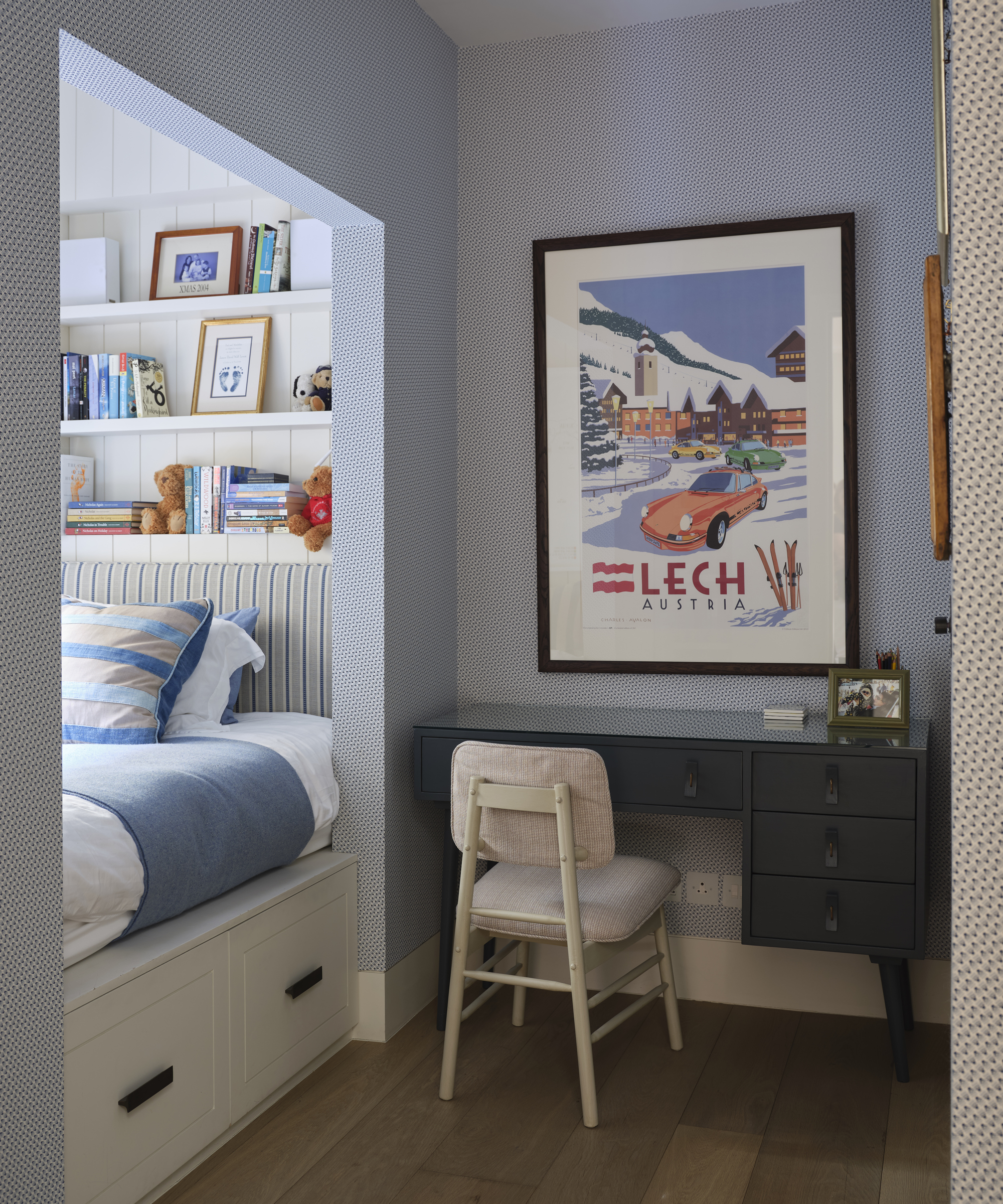
Maximizing space in a bedroom is always important, but even more so when you’ve got two lots of possessions to store and organize. Look around for untapped storage potential and consider ways you can utilize it to best effect.
Under-bed storage ideas are often overlooked but can be a game changer for keeping shared bedrooms organized’, says Julie. ‘Storage bins with wheels or slide-out drawers are great for stashing seasonal clothes, toys, or extra bedding [the Yecaye Under Bed Storage with wheels, from Amazon, has 4.5 stars and comes with a mesh top so you can see clearly what’s inside]. Use different-colored containers to designate who owns what’.
Brenda agrees, adding, ‘functionality and storage should go hand in hand when organizing small bedrooms; other options include utilizing vertical space on the back of a door, bookcase headboards and double-duty furniture such as a loft bed with desk underneath’.
‘If the room starts to feel overrun with toys despite your new-found storage solutions, Meaghan recommends using a toy rotation system. Keep some in storage and swap them out every few weeks. Children love the excitement of "rediscovering" their toys, and the rotation helps manage room clutter’.
Whatever it's size, and whoever it's occupants, it's perfectly possible to keep a shared bedroom neat, tidy and clutter-free.
There's no accounting for individual preferences though; if you've tried all our top tips and you're still feeling the tension, check out these bedroom divider ideas for literal ways to split the space.
Design expertise in your inbox – from inspiring decorating ideas and beautiful celebrity homes to practical gardening advice and shopping round-ups.

For 10 years, Tara King worked as a Content Editor in the magazine industry, before leaving to become freelance, covering interior design, wellbeing, craft and homemaking. As well as writing for Ideal Home, Style at Home, Country Homes & Interiors, Tara’s keen eye for styling combined with a passion for creating a happy – and functional – family home has led to a series of organization and cleaning features for H&G.

